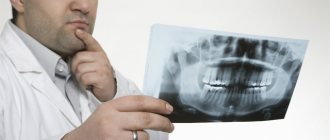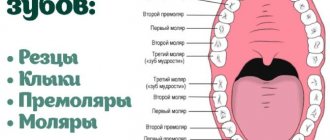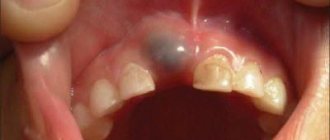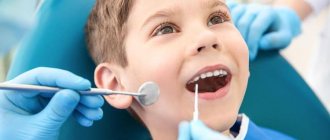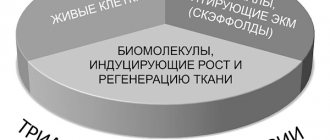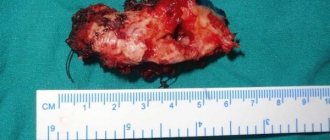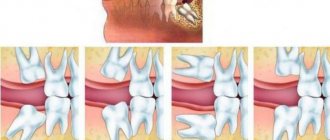Wisdom teeth often cause dental problems, the most serious of which is an atypical position. “Eights” can grow at an angle, be completely embedded in bone tissue, or only partially erupt.
With their crown, they can injure a neighboring tooth. When such situations arise, dentists recommend atypical wisdom tooth extraction. Timely surgery will help avoid injuries and the occurrence of carious inflammation. Specialists at the Profident Junior surgical dentistry clinic will perform the operation as quickly and painlessly as possible.
When is root removal required?
It happens that only the root remains in the gum, and its crown part has been completely lost due to mechanical stress or untreated caries. After an X-ray examination, CELT specialists determine the possibility of treating such roots and their further use as a support for the crown. If this is not possible and the tissue surrounding the root is changed, a decision is made to remove it. Indications for root removal of front, broken, baby and other teeth are:
| Indications | Reasons for deletion |
| Serious damage to the crown of the tooth | Complete fracture of the crown, complex transverse fracture, fracture along the lobar axis, as well as destruction of the tooth crown below the gum level |
| Inflammatory processes | Development of inflammation in the root area in the form of a cyst, granuloma, abscess or phlegmon |
| Dentofacial anomaly | The tooth that is to be removed has an atypical location and prevents other teeth from growing, injures the gums and causes discomfort |
| Movable root | Third degree of tooth mobility |
It is worth noting that the crown part of the tooth can be destroyed both on a tooth with a nerve and on a pulpless tooth. If the tooth is “alive” and the destruction of its coronal part is not severe, its preservation is quite possible. As for a tooth with a removed root, the latter, as a rule, are seriously damaged and their restoration is quite difficult. In this case, the doctor may recommend removal of the tooth root and subsequent implantation.
Causes of dystopia
Dental dystopia develops under the influence of various factors, the main ones being:
- deviations in the normal growth of the jaw (delayed growth);
- discrepancy between the size of the teeth and the size of the jaw;
- partial adentia (absence of some teeth);
- deviations in teething;
- hyperdentia (supernumerary teeth);
- atypical anlage of tooth germs;
- significant discrepancy between the sizes of temporary and permanent teeth;
- macrodentia (increase in the size of the dental crown);
- abnormal arrangement of adjacent teeth;
- injuries of tooth buds;
- bad habits (hand biting, thumb sucking by children during sleep);
- early removal of baby teeth and lack of rational prosthetics;
- narrowing of the dentition;
- late loss of baby teeth;
- genetic predisposition;
- absence of a neighboring tooth or an antagonist tooth on the opposite jaw;
- odontogenic neoplasms (cysts, tumors).
Removing the root of a decayed tooth
Cases where a root remains after tooth extraction are not uncommon. Its removal is a difficult and unpleasant procedure for the patient, even despite the effectiveness of modern anesthesia. Fortunately, the need to remove tooth roots does not always arise. If the root is healthy enough, it is treated and prosthetics are performed. However, removing a rotten tooth root is simply necessary, since its preservation will entail a number of problems:
- Halitosis (bad breath);
- A breeding ground for infection in the oral cavity, possible damage to neighboring teeth;
- The appearance of subgingival stone;
- Spread of infection to the maxillary sinuses, development of osteomyelitis;
- The appearance of cysts and granulomas at its apex ( removing a tooth with a cyst on the root
is a complex procedure); - A decrease in the body’s overall immunity due to the fact that it is forced to constantly fight the source of inflammation.
In order to properly plan the operation, our dentist performs an x-ray examination. The operation itself is performed using local anesthesia, dental forceps or an elevator. Removing the roots of the front teeth
is carried out using rotational movements, and lateral movements using rocking. The most complex cases may require additional manipulations, the use of burs and special microsurgical dental instruments. Removing the roots of the teeth of the lower and upper jaw is a more complex procedure than removing a whole tooth. It requires special training, which consists of examination, diagnosis and sanitation of the oral cavity. The treatment plan is drawn up based on diagnostic studies and the patient’s indications.
Diagnostics
Diagnosis of dystopic teeth consists of examining the oral cavity, assessing the bite and obtaining x-ray data. To accurately determine the condition of teeth and jaws, use:
- Teleradiography - X-ray examination is carried out from a large focal length, which reduces the radiation dose to the patient and reduces distortions in the image. Teleradiography is needed not only for diagnostics, but also for predicting the results of treatment and monitoring its process.
- Computed tomography is a layer-by-layer study of tissue. The images are combined into a 3D image, which allows you to more accurately study the position of the tooth in the jaw and develop a treatment plan.
- Orthopantomography - provides a detailed image of the jaw and all teeth, allows you to evaluate the inclination of erupted and impacted teeth, and detect anomalies of tooth germs and hard tissues.
Root removal steps:
- Carrying out activities for the administration of a local anesthetic drug;
- Separation of the circular ligament from the neck of the tooth, moving the gum tissue away from the edge of the alveolus;
- Cutting the gums and drilling out the bone tissue to provide access to the root (if necessary);
- The process of removing the root using forceps or a dental elevator. If a tooth has several roots, removal is carried out in parts;
- Treatment of the hole, suturing (if the gum is cut), treatment of the operated area.
It is important to understand that removing roots located on the upper jaw is different from removing roots located on the lower jaw. In the first case, special forceps are used, in the second - elevators. The technique for removing the roots of the upper jaw involves twisting single roots and dislocating parts of one root. As for the roots of the lower jaw, they are twisted.
What are the dangers of abnormal tooth position?
In addition to the fact that dystopic teeth spoil the beauty of a smile, they can cause:
- traumatic (decubital) ulcers of the mucous membranes of the oral cavity, which can degenerate into malignant neoplasms;
- glossitis - inflammation of the tongue;
- pain when chewing;
- disruption of eruption and displacement of adjacent teeth;
- malocclusion, disorder of chewing function and, as a consequence, deterioration of the gastrointestinal tract;
- accumulation of dental plaque, deposition of tartar on dystopic and adjacent teeth due to the difficulty of hygiene; as a result – the development of caries and its complications;
- speech disorder.
Dystopic impacted wisdom teeth cause:
- pain in the jaw, increasing when opening the mouth, chewing and swallowing;
- headaches;
- increased body temperature;
- swelling of the gums and tongue;
- trigeminal neuralgia;
- inflammation of the submandibular lymph nodes;
- destruction of a nearby tooth;
- pericoronitis - purulent inflammation of the gums during partial tooth eruption.
A retromolar cyst often appears at the apex of the root of a dystopic wisdom tooth, which threatens the development of odontogenic sinusitis and the spread of infection to other organs through the circulatory system.
How much does tooth root removal cost in Moscow?
The cost of tooth root removal is determined individually, as it depends on how complex the case is. In the dental department of the multidisciplinary clinic CELT, it starts from 800 rubles for a simple removal and ends at 10,000 rubles for a complex removal of a 2nd degree dystopic tooth. You can view our basic prices in this section of our website. In order to find out the exact cost of tooth root removal in our clinic in Moscow, consult our specialist.
In the dentistry of the CELT clinic, you can get a consultation with a dental surgeon, undergo an examination and remove the roots of the teeth, if there are indications for this. We will eliminate any dental problems effectively and absolutely safely.
Caries - what is it?
More than 95% of the inhabitants of our planet face the disease. Thus, it can be called the most common dental problem. At the very beginning, the pathological process affects only the enamel, and in the absence of therapy it penetrates into the deep hard layers. Then the soft tissues with nerve fibers and blood vessels become inflamed.
The disease is insidious because in the earliest stages it does not manifest itself in any way, and the patient begins to sound the alarm only when acute pain and a large hole appear that cannot be eliminated by conservative methods.
Reviews of doctors providing the service - Tooth root removal
I would like to express my gratitude to the dentist Elena Nikolaevna Kiseleva and her assistant Svetlana - they are real specialists and at the same time sensitive, not burnt out by years of practice.
Thanks to them, I have been coming back here for many years. Thanks to the management for such doctors! Read full review Svetlana Nikolaevna
13.08.2021
I am very grateful to Evgeniy Borisovich Antiukhin for removing my three eights. Especially considering that the lower tooth was not the simplest (it was located in an embrace with a nerve). The removal took place in 2 stages, one tooth under local anesthesia, two under general anesthesia. I had no idea that wisdom teeth could be... Read full review
Sofia
28.12.2020
Duration of healing of the dental alveoli
Many doctors' clients are interested in how long it will take for the dental alveolus to heal after the removal of a damaged tooth. Typically, this process takes from 5 to 7 days. After 3-4 weeks, the gum area adjacent to the socket heals completely. It is important that the jaw is not damaged during the removal process. Such an injury will cause the healing process to take six months. To prevent this from happening, make an appointment at the As-Praktika clinic, where experienced dental surgeons work. In Samara, the price for tooth extraction is quite reasonable; this procedure is available to absolutely everyone. You can make an appointment at this clinic online by indicating the desired date of visit.
Classification of impacted teeth
Taking into account how deep the unit is under the gum tissue, retention is usually classified into:
- partial (part of the impacted crown rises above the surface of the gum and is clearly visible to the naked eye);
- complete (the entire crown is covered by gingival tissue or is located deep in the jaw bone).
Doctors also take into account where the tooth is located. If in bone tissue, then they speak of retention with immersion, if above it - without immersion.
Impacted dystopic molars, incisors, and canines are also found. They grow out of place or at the wrong angles. Then there is a significant displacement of the dental axis.
How impacted units are removed
The operation to remove an impacted tooth is always difficult. It can only be performed successfully by an experienced and highly qualified dental surgeon. Unerupted wisdom teeth are especially difficult to pull out.
On average, surgery takes about one and a half to two hours. It includes the main steps:
Introduction of anesthesia. This may be local anesthesia, sedation or general anesthesia - it all depends on the location and depth of the unit. The doctor also takes into account the individual wishes of the patient and his state of health.- Excision of the gum and gaining access to the bone tissue in the area of the impacted tooth. A laser or scalpel is used. The first option is more preferable, as it makes the operation less invasive and eliminates the risk of bleeding.
- Preparation of exposed bone to gain access to a submerged tooth. Boron is used here.
- Removing the impacted unit with forceps - an elevator. If the tooth contains several roots and is large, it is first sawed and then removed in pieces.
- Performing plastic surgery of hard and soft tissues, suturing (if necessary).
- Treating the surgical wound with antiseptics and anti-inflammatory solutions.
After the extraction of an impacted tooth, the patient spends some time in the maxillofacial surgery hospital. He is prescribed daily wound treatment and various physical procedures. These measures can reduce the likelihood of developing postoperative complications.
